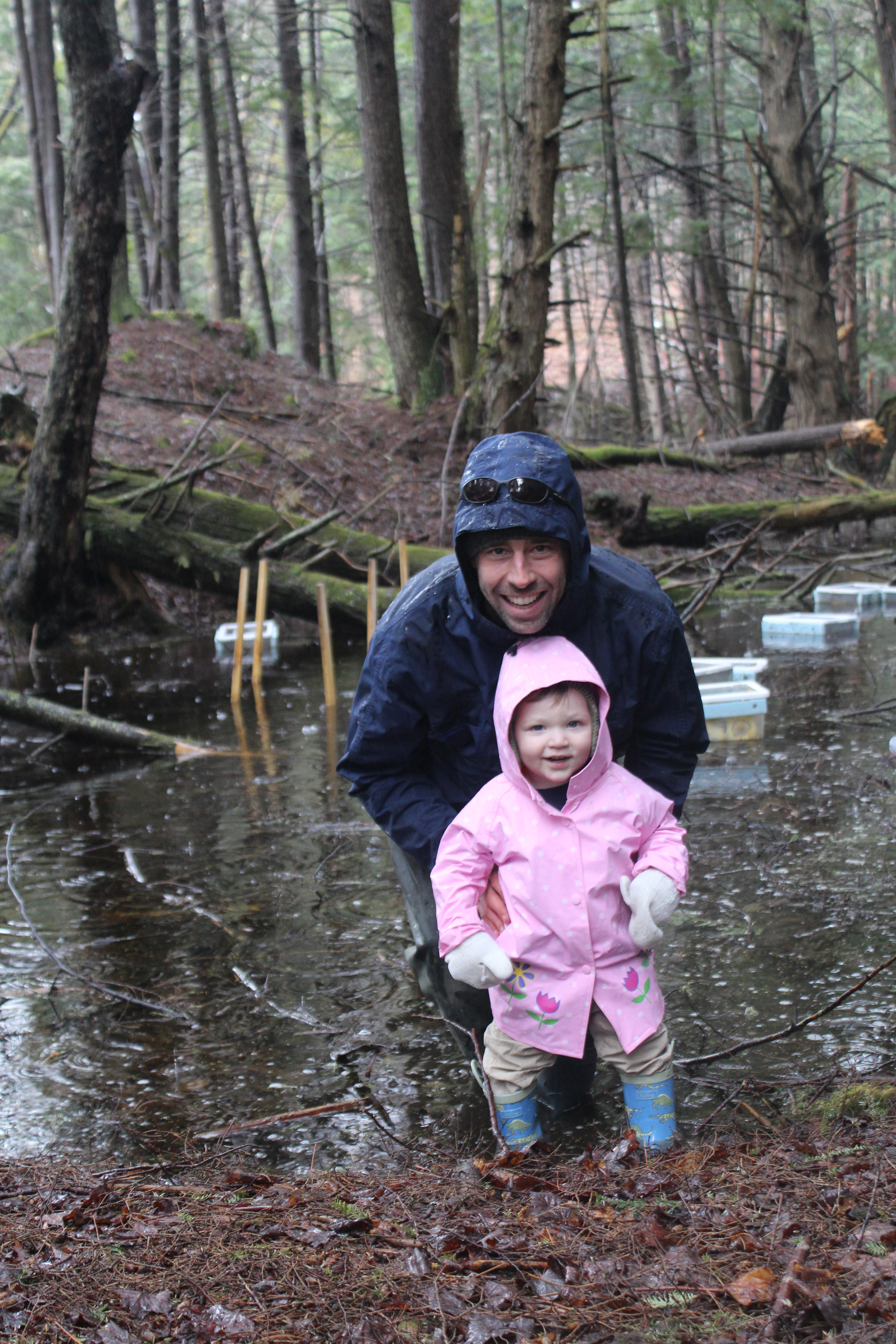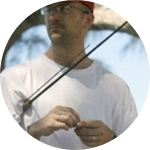About This Project
Amphibians are one of the most rapidly declining groups of vertebrates on Earth. We seek to understand the impact that human traffic and road use have on populations of wood frogs in the Northeast. We compare natural populations of frogs in pristine woodland ponds to those in road-adjacent ponds and study their development, survival, growth rates, and reproductive status. We aim to find ways to understand and better protect these amphibians.Ask the Scientists
Join The DiscussionWhat is the context of this research?
We know from our previous work that amphibians may in fact be adapting to the pollutants that car traffic is leaving in roadside ponds. Some of our data suggest that animals from roadside ponds may develop longer legs, which may facilitate faster road crossings. In addition, eggs from roadside ponds have higher hatching success in those ponds compared to eggs that are transplanted to roadside ponds from the woodlands. This suggests that frogs from roadside ponds may have a small survival advantage in these environments. However, they still survive poorly overall compared with frogs from pristine environments, meaning that the jury is still out as to whether roadside ponds are contributing to amphibian declines.
What is the significance of this project?
Amphibians are highly threatened. They depend on having clean water in which to lay eggs, and on having suitable forested habitat in which to grow into adults. We already know that roadside ponds have higher concentrations of salt (from de-icing agents used in winter) as well as toxicants like cadmium and other automotive pollutants. Although at first blush, it would seem that these ponds should necessarily be terrible for frogs, our preliminary results suggest the possibility that frogs are actually adapting to some of these conditions, and may be on an evolutionary path towards long-term survival. However, results are mixed and suggest that only some aspects of frog life are suitable to roadside ponds. Critical experiments have yet to be performed before we can predict their fate.
What are the goals of the project?
We aim to perform a reciprocal transplant experiment in which egg masses from both woodland and roadside ponds will be split in half and either left in their natal pond, or transplanted to a new alternative (woodland or roadside) environment. This will allow us to follow the respective growth, development, swimming performance, jumping performance, and mating success of individuals in each environment, and to measure the degree to which frogs from each environment are adapted to their natal ponds.
We hope to understand the degree to which roadside environments negatively impact these frogs (if at all) relative to frogs living in pristine environments. We hope that our results will allow us to inform conservation planners when considering the fate of endemic wild life.
Budget
Funds are to be used to pay for:
1. Field materials used in capturing frogs as they arrive at ponds for mating in Spring (fencing, bucket traps, stakes, nesting boxes).
2. Laboratory expenses for maintaining adult frogs while they lay eggs (water conditioners, storage racks, buckets, lighting, temperature control)
3. Mileage reimbursement for travel to ponds
4. Funding to support Dartmouth undergraduate researchers
Meet the Team
Affiliates
Team Bio
I have been studying reptiles and amphibians for 15 years. I caught my first lizard as an undergraduate on my first camping trip to California and it was love at first site. Since then I've worked on the West Coast, on islands in The Bahamas, and in the North East. My work spans the basic evolutionary sciences, physiology, behavior, and applied work in conservation. My laboratory is full of bustling undergraduates, graduate students, and postdocs, all excited to do the best science we can.Our team on this project is made up of:
Dr. Ryan Calsbeek: Associate Professor, Dartmouth College
Ph.D., University of California-Santa-Cruz
B.S., Indiana University, Bloomington, Indiana
Dr. Steven Brady: Postdoctoral Fellow
Ph.D. Yale University
B.S. St. Michael's College
Deborah Goedert: Graduate Student Dartmouth College
B.S., M.S. Universidade de Brasilia
Fredrik Eriksson: undergraduate Dartmouth College; Sweden
Press and Media
New York Times: http://green.blogs.nytimes.com/2012/02/27/learning...Science Daily: http://www.sciencedaily.com/releases/2012/02/12020...
Environment Yale: http://environment.yale.edu/envy/stories/humans-dr...
Additional Information

Working in the cattle tanks with my favorite field assistants

Dr. Steven Brady Postdoctoral fellow

Road proximity causes extreme swelling in male wood frogs

Wood frogs mate early in the year!

Graduate students working on frog call recordings

A typical rainy spring day collecting data

The lab hard at work ahead of the spring wood frog migration

Measuring the concentration of salt in a roadside wetland
 Checking for frogs. Steve's kids are in the field almost as much as he is...
Checking for frogs. Steve's kids are in the field almost as much as he is...
.. no matter the weather.
Project Backers
- 5Backers
- 5%Funded
- $225Total Donations
- $45.00Average Donation



